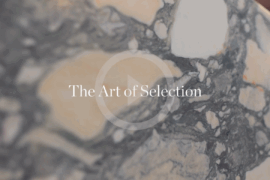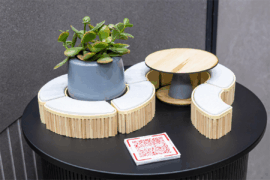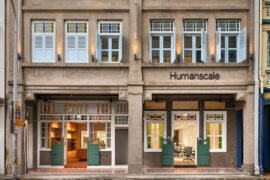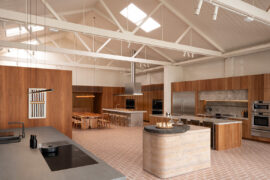For the Singapore Chinese Cultural Centre, DP Architects merge traditional Chinese influences with a forward-thinking design vision to create a venue that fosters socio-cultural interactions.

May 29th, 2017
As a new cultural landmark complementing the neighbouring Singapore Conference Hall in the central business district, the Singapore Chinese Cultural Centre (SCCC) is a thoughtful amalgamation of functional and educational spaces with an expansive programme driven by innovation and anchored in culture and arts.
Designed by DP Architects with landscape consultant DP Green, the new building is the answer to a design brief that called for a forward-looking, and spatially and socially inclusive building that would create a welcoming destination for diverse groups of visitors.
The new venue walks a fine line between fitting in with its surrounding context and standing out. The SCCC is a one-stop destination for performances, exhibitions and cultural activities. To bring coherence to the composition of programmes held within, DP Architects gave the building a clean and contemporary look that also connects to the neighbourhood around it.
DP took inspiration from traditional Chinese three-tiered architectural compositions, and organised the SCCC in a functional stack for clarity of programmes, circulation and planning. Articulation of the architectural language reveals itself in three distinctly defined tiers: an elevated base that offers public spaces below, a solid body that contains all the main functions, and a glass crown for performances and cultural activities.
The DP team also drew inspiration from traditional Chinese landscape art to conceptualise the SCCC building and connect it to the setting around it. “The landscape is usually expressed with rough strokes (皴 in Chinese) to outline the coarse nature, while the building is depicted with more refined representations,” recalls Wang Ying, Associate Director, DP Architects. Likewise, in the SCCC, the juxtapositions exist between the box form and the multi-faceted podium, between the transparent top and the opaque bottom, and between the smooth crown and textured base. The juxtapositions create a balanced dialogue, echoing the artistic sensibilities found in Chinese landscape paintings.
As a result, the subtle implementation of Chinese architectural and artistic influences and the clean, contemporary expression of these ideas in the final design allows the SCCC to serve as a beacon of cultural identity and heritage, while remaining harmonious and inclusive of broader communities. According to Ying, “The mix of contemporary ideas in the facade treatment and traditional architectural convention in the planning embodies the spirit of respect. The architecture remains true to Chinese culture and heritage while becoming a conduit for interactions from various socio-cultural elements.”
Photographs: DP Architects
INDESIGN is on instagram
Follow @indesignlive
A searchable and comprehensive guide for specifying leading products and their suppliers
Keep up to date with the latest and greatest from our industry BFF's!

CDK Stone’s Natasha Stengos takes us through its Alexandria Selection Centre, where stone choice becomes a sensory experience – from curated spaces, crafted details and a colour-organised selection floor.

From the spark of an idea on the page to the launch of new pieces in a showroom is a journey every aspiring industrial and furnishing designer imagines making.

London-based design duo Raw Edges have joined forces with Established & Sons and Tongue & Groove to introduce Wall to Wall – a hand-stained, “living collection” that transforms parquet flooring into a canvas of colour, pattern, and possibility.

Humanscale’s new showroom is about the modern workplace, with ergonomic excellence, sustainable design and architectural heritage in Singapore.

With Steelcase having reopened its refreshed WorkLife Showroom in Singapore this year, we spoke to Navedita Shergill about some key workplace macro shifts identified in their research.
The internet never sleeps! Here's the stuff you might have missed

The Fisher and Paykel Melbourne Experience Centre by Clare Cousins Architects with Fisher and Paykel Design and Alt Group has been awarded The Retail Space at the INDE.Awards 2025. As a winning project, it redefines the possibilities of retail architecture by creating an immersive, material rich environment shaped by place, culture and craft.

Good looks count, but function completes the space.

BLP’s new Sydney Children’s Hospital, Randwick building brings together paediatric care, family-centred design and Australia’s first Children’s Comprehensive Cancer Centre in a major addition to the Randwick Health & Innovation Precinct.